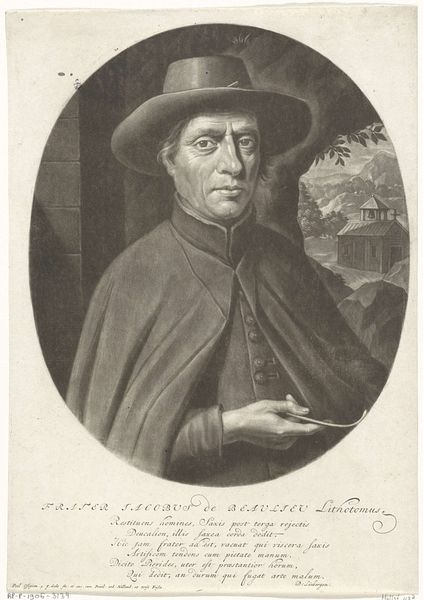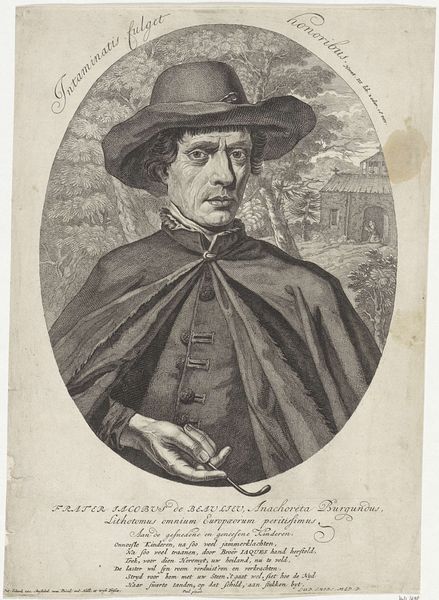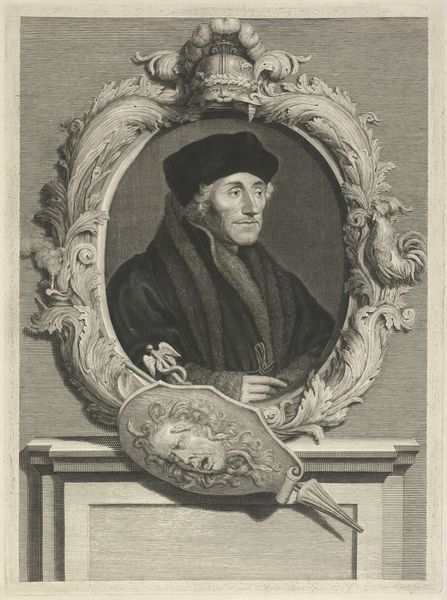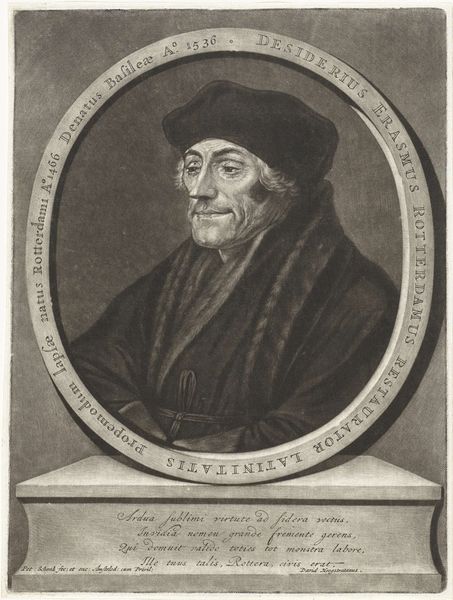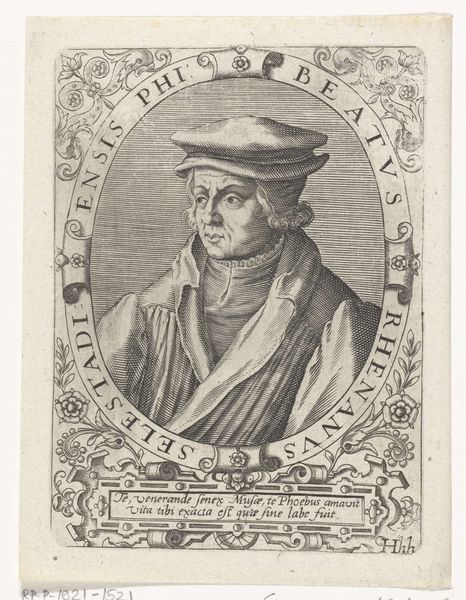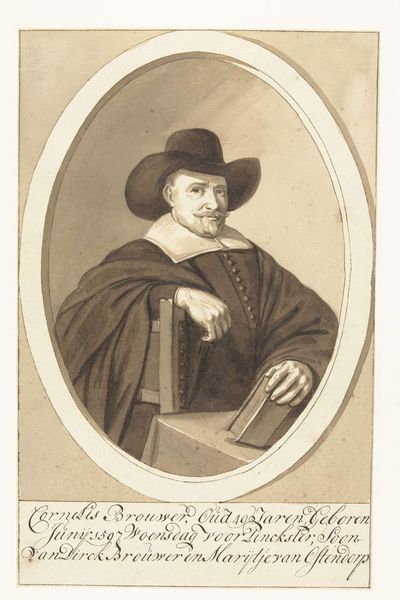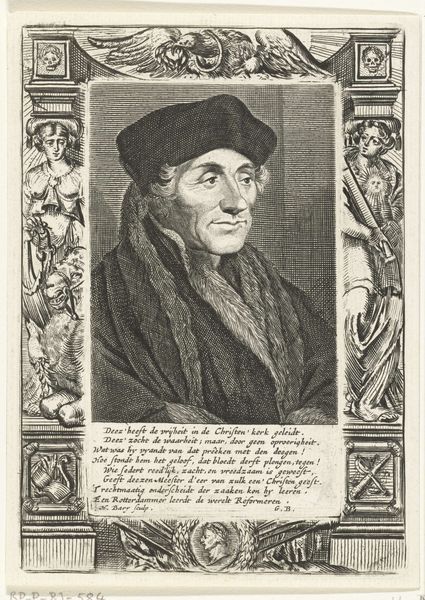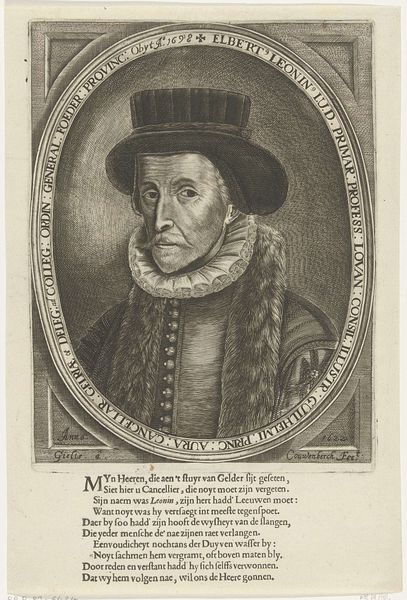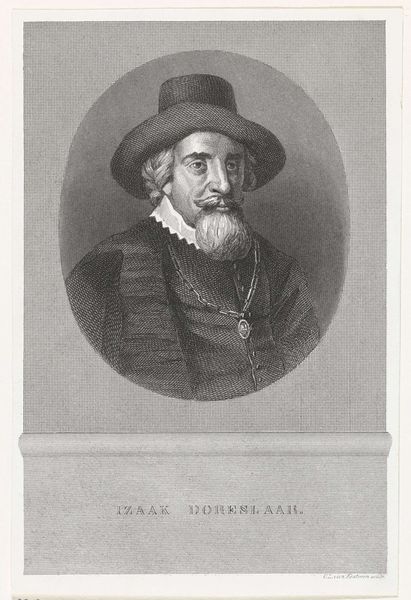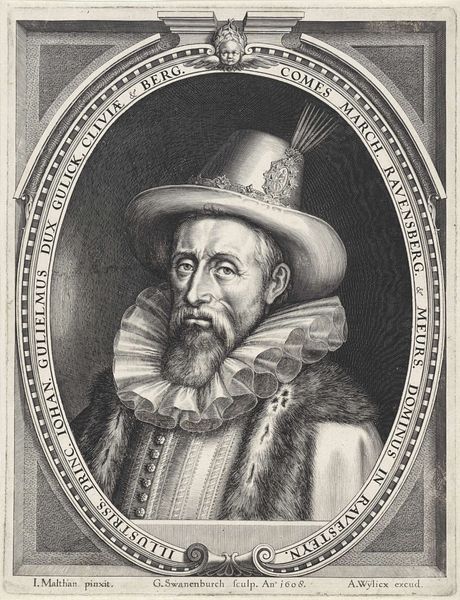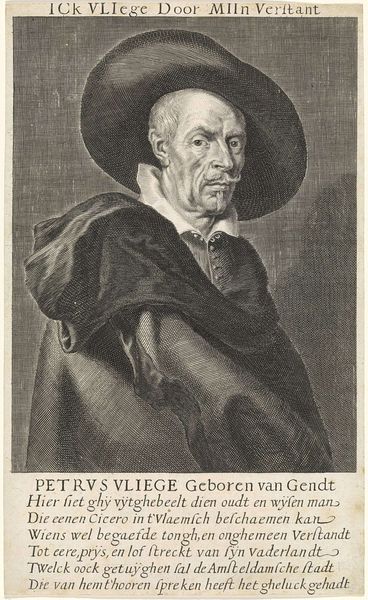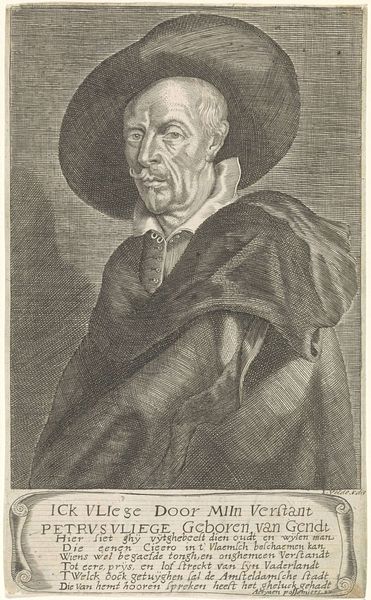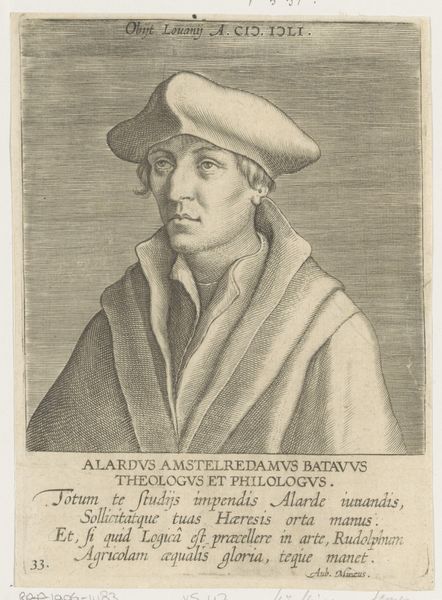
drawing, print, engraving
#
portrait
#
pencil drawn
#
drawing
#
baroque
# print
#
pencil sketch
#
charcoal drawing
#
charcoal art
#
historical photography
#
portrait reference
#
pencil drawing
#
engraving
Dimensions: height 274 mm, width 187 mm
Copyright: Rijks Museum: Open Domain
Editor: This is "Portret van frère Jaques de Beaulieu" by Pieter Schenk, created sometime between 1670 and 1713. It's an engraving. It feels almost like a photograph, yet also clearly a drawing. What's most striking to you? Curator: As a historian, I’m immediately drawn to the context surrounding this image. The sitter, Jacques de Beaulieu, was a fascinating figure – a traveling lithotomist, a surgeon specializing in removing bladder stones. What does that tell us about medicine and its presentation in the late 17th/early 18th century? Do you notice anything symbolic? Editor: I see him holding what looks like a small spoon. Is that… the tool he used? It’s so delicate looking! Curator: It is! But consider the image's purpose. This is a print, easily reproducible and disseminated. Think of it as advertising. Schenk’s portrait isn't just about representing Beaulieu's likeness. It's about constructing his public persona, legitimizing his practice through visual cues. Look at the inscriptions framing the portrait. What might they suggest about Beaulieu's intended audience? Editor: It seems aimed at those suffering, desperate for a cure. The words express that not everyone heals and asks for the help of GOD to succeed. It really emphasizes faith, perhaps reassuring worried families. Curator: Precisely! The image operates on multiple levels – a portrait, a medical advertisement, and a religious statement. It reveals much about the social and cultural anxieties of the period. Editor: I never considered how deeply intertwined these roles could be! Thinking about it that way changes everything about how I perceive the artwork's impact. Curator: And that’s the beauty of art history, isn't it? Context truly illuminates the piece.
Comments
No comments
Be the first to comment and join the conversation on the ultimate creative platform.
